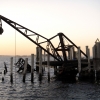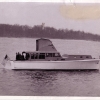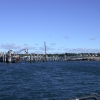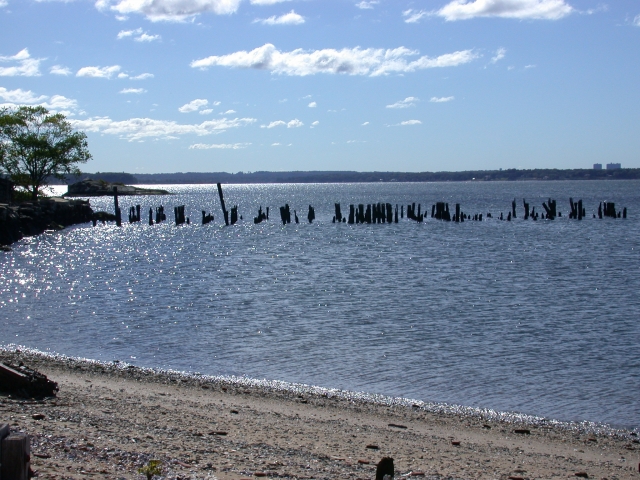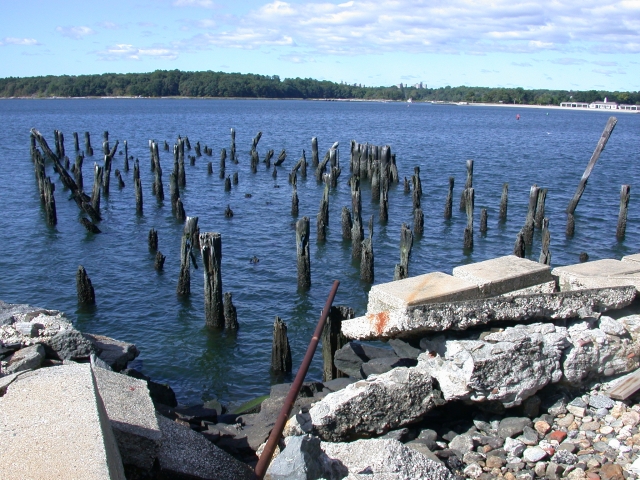01-Aerial 1950s CrssBrwn_1966 docks-crop
Aerial view of the Freight Pier (upper) and Passenger Dock (lower) on the shore of Fort Slocum's Quartermaster Area, looking north, late 1950s.
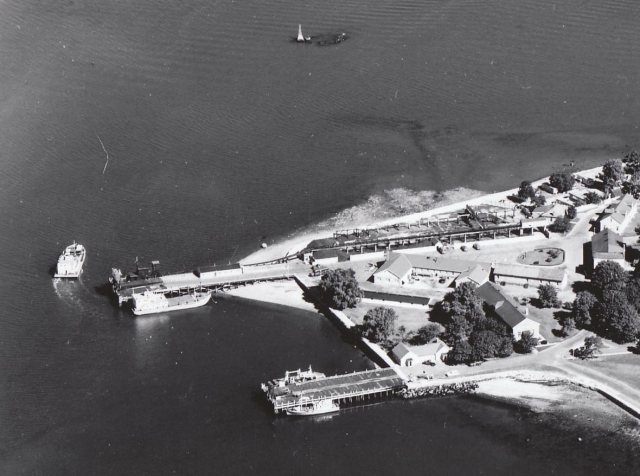

02-Fort Slocum Ferry Dock circa 1963
Arriving at the Freight Pier, as seen from one of Fort Slocum's ferries, looking northeast, ca. 1963.
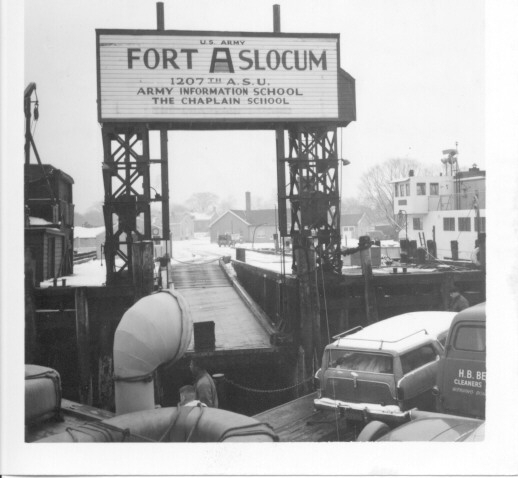

03-Pass_Dock c1893 NA-RG92
Passenger Dock with boathouse (left) and baggage room (right), which were removed in 1938. The Hamilton, an Army tugboat, is moored to the pier. View southeast, ca. 1893.
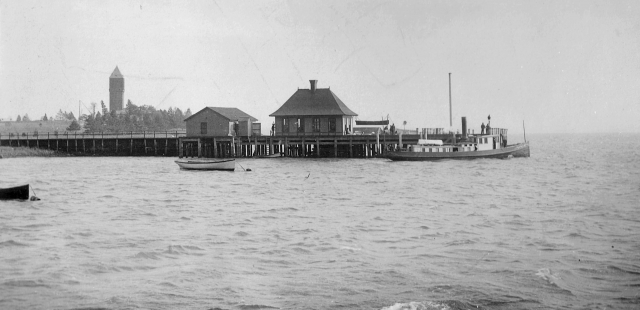

04-Pass_Dock Col Barnett 1930s postcard
Passenger Dock in the mid-1930s, looking northeast. The Col. Barnett, a passenger-freight steamer, is tied up at the end of the pier.


05-Coal_Dock NA-RG92-F-19-15
From 1893 until 1932, a wood trestle for unloading coal barges dominated the Freight Pier, also called the Coal Dock. View to northeast, ca. 1893.
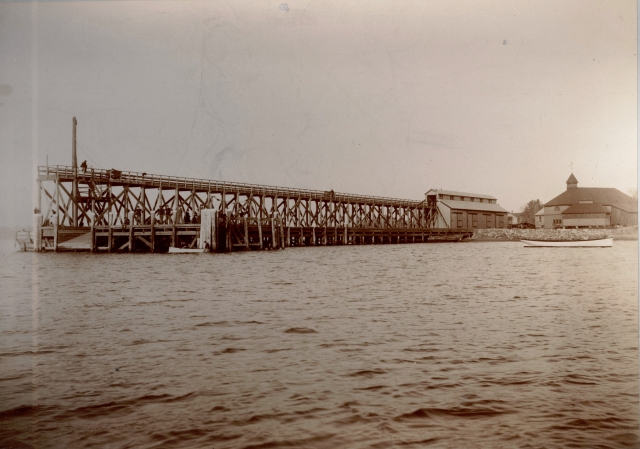

06-Freight_Dock CoalConvey 1932 NA-RG77
Freight Pier after replacement of coal trestle with enclosed conveyor belt, looking southwest, August 1932. Two coal barges are moored at the end of the pier.


07-Tug Hamilton 1890s
The Quartermaster Corps operated many different vessels to and from Davids Island over the century it was an Army post. The tugboat Hamilton was one. It was active fom 1878 until ca. 1900 (collection of the New York Historical Society, Stonebridge Photo Collection, PR 066 282).

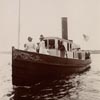
08-Steamer General Barry c1910
The Gen. Barry, a passenger-freight steamer, active at Fort Slocum in the early 20th century.

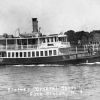
09-PC-FS-6 Stmr Gen DS Stanley c1910cm
The Gen. D.S. Stanley, a passenger-freight steamer, active at Fort Slocum in the early 20th century.
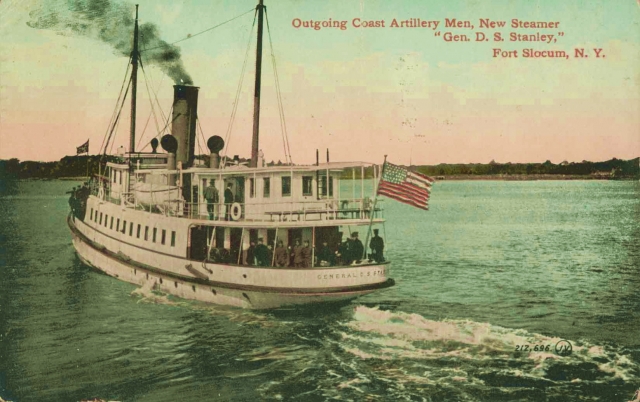

10-Pass_Dock GGBain LC Recruits Boarding c1918
Recruits on the Passenger Dock crossing the Gen. D.S. Stanley to board a larger unidentified steamer, ca. 1918 (Library of Congress, Prints & Photos Div, GG Bain digital collection).
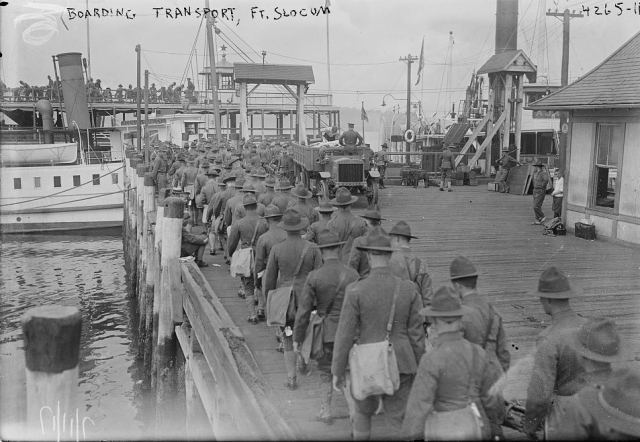

11-Stearmer Col Barnett 1930s
The passenger-freight steamer Col. Barnett, active at Fort Slocum in the 1930s.
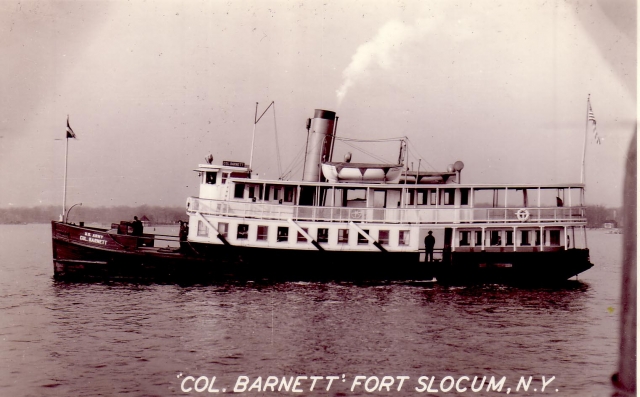

12-PC-FS-77 Launch Q_11 c 1940
The launch Q-11, active at Fort Slocum primarily as a night ferry in ca. 1938-1941.
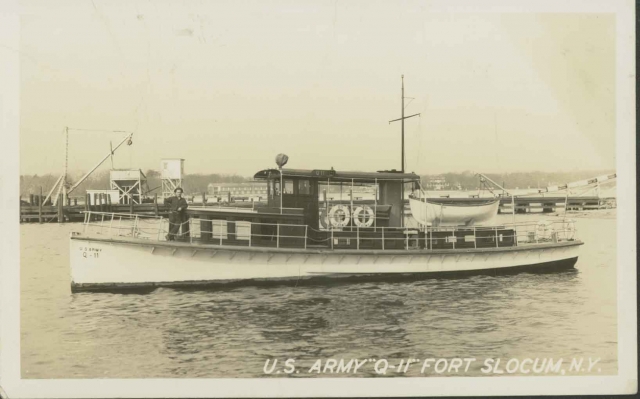

13-Lighter Maj Normoyle c1944
The steam lighter Maj. James E. Normoyle (active in New York Harbor 1920s-1940s), ca. 1944.
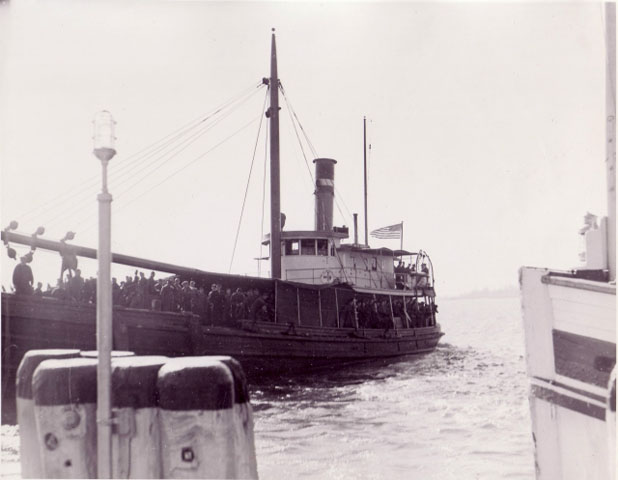

14-Lighter MGen HL_Rogers c1940
The Maj. Gen. H.L. Rogers, a powered lighter, loaded with soldiers outbound from Fort Slocum, ca. 1940.

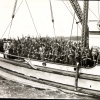
16-Ferry BSP_1776 c1960
BSP 1773, a self-propelled barge, active at Fort Slocum from the 1940s to the 1960s.
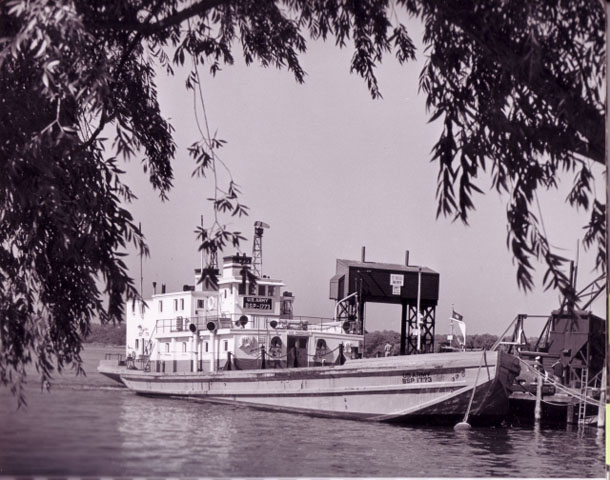

17-Ferry FB_900 c 1960
The ferryboat FB 900 in about 1960, soon after it was put into service at the post.
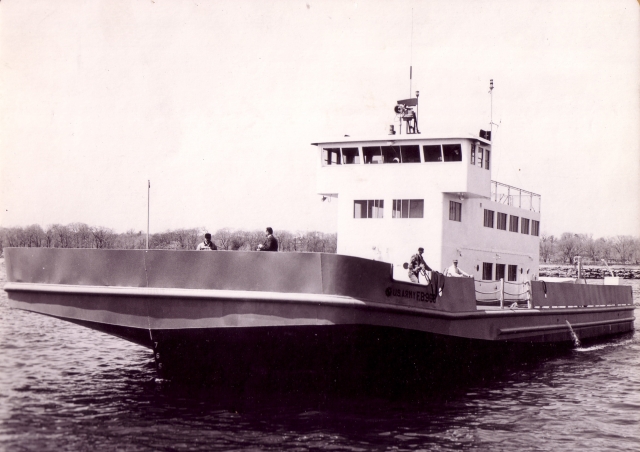

20-IMGP0208rcm10
Remains of the coal hoist at the end of the Freight Pier, looking south, September 2005.

